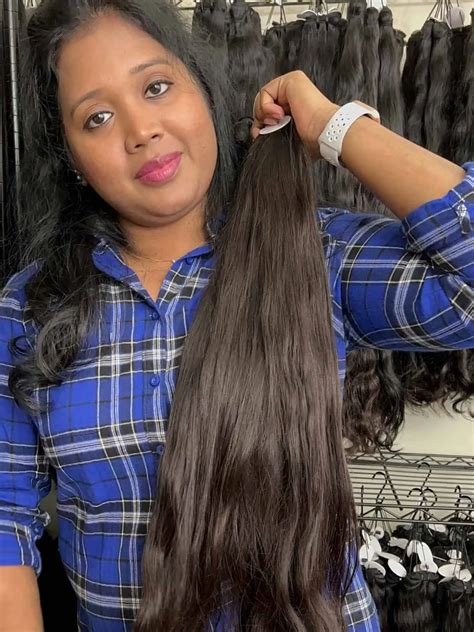What is Raw Indian Hair?
Raw Indian hair refers to unprocessed, natural hair sourced from India. It is highly prized for its exceptional quality, durability, and versatility. Unlike processed hair, raw Indian hair retains its original cuticle, which protects it from damage and provides a healthy, lustrous shine.

Why Choose Raw Indian Hair?
- Exceptional Quality: Raw Indian hair is known for its silky, smooth texture, minimal shedding, and natural bounce.
- Durability: With proper care, raw Indian hair can last for up to two years or more, making it a wise investment.
- Versatility: Raw Indian hair can be styled in a wide range of ways, from sleek and straight to bouncy and voluminous. Its natural versatility allows for endless possibilities.
Types of Raw Indian Hair
India’s diverse regions produce a variety of raw hair types, each with unique characteristics:
- Temple Hair: Collected from Hindu temples, temple hair is considered the purest and most valuable type.
- Remy Hair: Remi stands for “Remy-non-European,” indicating that the hair cuticles are all aligned in the same direction, ensuring tangle-free tresses.
- Virgin Hair: Virgin hair has never been chemically treated, colored, or permed, making it the most natural and unprocessed option.
Benefits of Raw Indian Hair
- Enhances Natural Beauty: Raw Indian hair complements any facial features, enhancing natural beauty without compromising authenticity.
- Protects Hair Health: The retained cuticle of raw Indian hair protects it from heat styling and environmental damage, preserving its health and shine.
- Low Maintenance: Raw Indian hair requires minimal maintenance, with regular brushing and washing sufficient to keep it looking its best.
Market Statistics
According to industry reports:
- The global hair extensions market is projected to reach $12.6 billion by 2025.
- Raw Indian hair accounts for over 55% of the global hair extension market.
- The United States and Europe are the primary export markets for raw Indian hair.
Innovative Applications of Raw Indian Hair
Beyond traditional hair extensions, raw Indian hair finds unique applications in various industries:
- Cosmetology: Hair professionals utilize raw Indian hair for advanced techniques like micro-looping and tape-in extensions.
- Medical: In alopecia and hair loss treatments, raw Indian hair provides natural-looking wigs and hairpieces.
- Textiles: The high quality of raw Indian hair makes it suitable for manufacturing premium fabrics like silk and cashmere.
Essential Tips for Choosing Raw Indian Hair
- Source from Reputable Suppliers: Choose suppliers with a proven track record in providing genuine raw Indian hair.
- Check for Authenticity: Ask for certifications or testing results to ensure the hair is unprocessed and of Indian origin.
- Consider Hair Type: Determine your desired hair texture, color, and density to select the most suitable raw Indian hair type.
Step-by-Step Guide to Caring for Raw Indian Hair
- Wash Gently: Use lukewarm water and sulfate-free shampoos to avoid stripping the hair of its natural oils.
- Condition Regularly: Apply a nourishing conditioner to replenish moisture and keep the hair soft and manageable.
- Detangle with Care: Use a wide-toothed comb to gently remove tangles, starting from the ends and working your way up.
- Air-Dry: Avoid using blow dryers or heat styling tools, as they can damage the hair cuticles.
- Protect from Sun and Heat: Wear a scarf or hat when exposed to sunlight or excessive heat to protect the hair from damage.
Tables for Reference
| Type of Raw Indian Hair | Characteristics |
|---|---|
| Temple Hair | Purest and most valuable |
| Remy Hair | Cuticles aligned, tangle-free |
| Virgin Hair | Never chemically treated or colored |
| Wavy Hair | Natural bounce and volume |
| Key Statistics of Raw Indian Hair Market | Value |
|---|---|
| Global Market Size | $12.6 billion (projected) |
| Raw Indian Hair Share | Over 55% |
| Primary Export Markets | United States and Europe |
| Innovative Applications of Raw Indian Hair | Industries |
|---|---|
| Micro-looping and Tape-in Extensions | Cosmetology |
| Wigs and Hairpieces | Medical |
| Premium Fabrics | Textiles |
| Essential Tips for Choosing Raw Indian Hair | Considerations |
|---|---|
| Source | Reputable suppliers |
| Authenticity | Certifications or testing |
| Hair Type | Texture, color, density |
| Care | Gentle washing, conditioning, detangling |
| Protection | Avoid heat and sun exposure |
